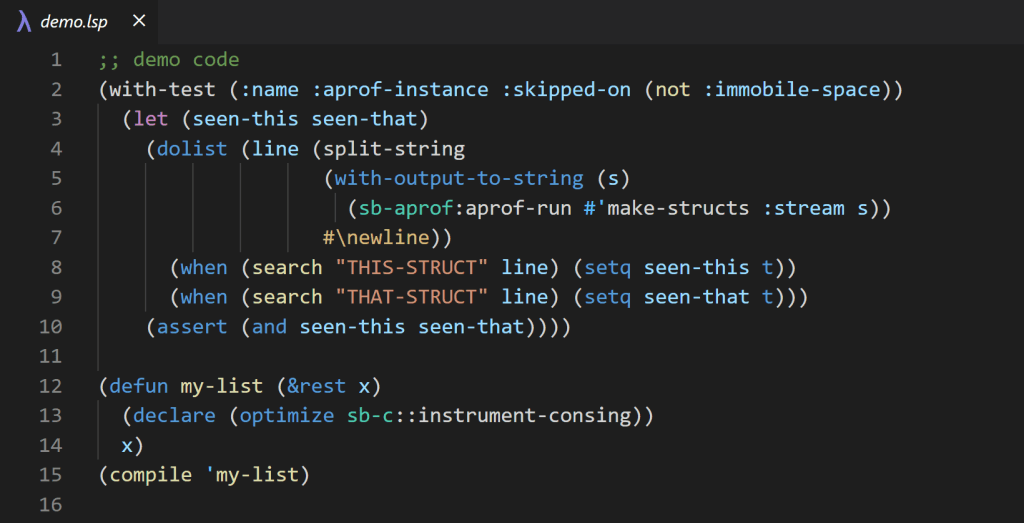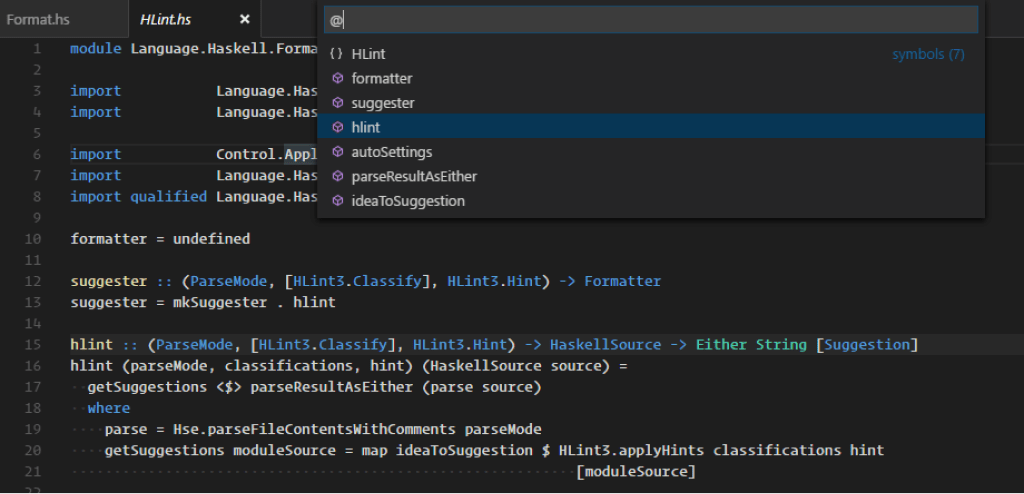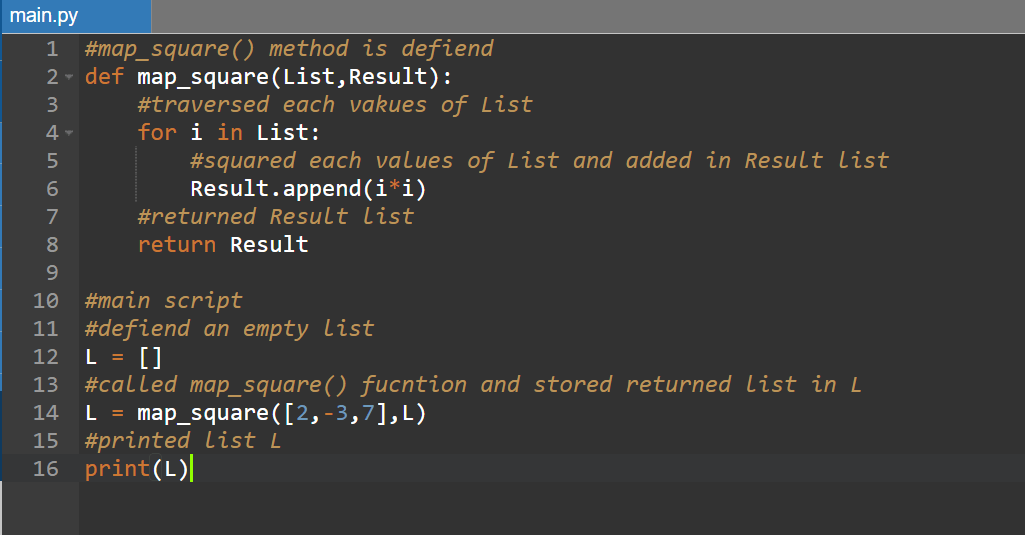Top 10 Common Languages for Artificial Intelligence in 2024
Artificial Intelligence is a topic that everyone is discussing. The material potential of technology is shown by developments like DeepMind's use of AI to predict molecular structures and OpenAI's Dall-E, which can generate pictures from text prompts. Advances in natural language processing are even making chatbots and search engines more intelligent.
The problem is that, despite all of AI's potential, it may be challenging to sort through all of the hype. Your brain might spin from all the differing viewpoints on various programming languages and frameworks. Thus, we will guide you through the most popular languages used in AI development in this easy. We'll review important considerations while choosing the most common Artificial Intelligence languages for your next project.
Are you looking to create a custom AI application using many programming languages? Our AI/ML services can help you create unique AI solutions according to your use case. For a free consultation, please get in touch with us.
Statistics for Artificial Intelligence
- 34% of companies currently use AI, and an additional 42% are exploring AI. (newsroom)
- 28% of U.S. adults said their employer is using ChatGPT or similar chat-based tools. 19% said their employer is using AI image generators, 30% said their employer is using AI for data analysis, 21% said the employer is using AI tools for video generation, and 17% said their employer is using AI for HR and recruiting. (ipsos)
- 30% of IT professionals say their colleagues are using AI and automation tools to save time. (newsroom)
- Larger companies are 100% more likely to use AI than smaller companies, but 41% of smaller companies are currently developing AI strategies. (newsroom)
- 35% of organizations are training and reskilling their teams to use new AI and automation tools. (mckinsey)
Top Common Programming Languages for Artificial Intelligence
Let's examine the unique use cases for these AI programming languages and what makes them so well-liked.
Python
Python, a versatile general-purpose programming language, has gained popularity in AI development due to its analytics and data visualization features. Its user-friendly syntax makes it simpler for data scientists and analysts to understand, instilling confidence in its adaptability to various AI tasks.
Garbage collection supports automated memory management in the language, and interpreted execution enables rapid iterations in development without requiring recompilation.
Thanks to libraries like NumPy, Python has strong support for matrices and scientific computing, which is one of its advantages. This offers a high-performance basis for several AI methods, such as neural networks and statistical models.
The language has a plethora of AI-specific libraries and frameworks spanning deep learning, high-level neural network APIs, and fundamental machine learning, such as sci-kit-learn, Tensorflow, and PyTorch.
For What Purposes Does AI Utilize Python?
Python is used in artificial intelligence (A) for natural language processing, computer vision, machine learning, and general AI prototyping. It is particularly good in face identification, picture recognition, deep learning, reinforcement learning, chatbots, document analysis, reinforcement learning, machine learning algorithm development, and prediction models.
Advice: Avoid Python if you wish to perform computationally demanding activities that require close attention to project specifications.
R
R, a popular language for data science applications, is the standard for statistical computation. Its practicality and effectiveness in AI algorithms, including data analysis, simulations, and probabilistic modeling, provide reassurance to developers and data scientists.
R's package ecosystem allows it to manipulate and visualize data, which is essential for AI Development. The caret package adds tools for preprocessing and validation to improve machine learning capabilities.
Additionally, the flexible layered syntax of graphics ideas provided by ggplot2 may be used to create excellent visuals and customized data visualizations. The TensorFlow for R package bridges into TensorFlow's capabilities to enable scalable production-grade deep learning.
What Does R Have a Place in AI?
Native Bayes and random forest models are only two of the many statistical machine learning use cases available in R. R is used in data mining to create association rules, group data, and minimize dimensions to gain insights. It is also a great tool for multivariate regression analysis and time series forecasting utilizing the GARCH and ARIMA models.
R is also used for risk modeling methods such as survival analysis and generalized linear models. Applications in bioinformatics, including statistical genomics and sequencing analysis, value it.
Use R for preliminary research and experimenting. Because it lacks compilers and memory management, it is unsuitable for subsequent phases, such as integrating machine learning into real-world products. Additionally, there is a learning curve for those who are outside of data science fields.
Java
AI systems that must interface with current business systems and runtimes utilize Java. The JVM maintains codebase compatibility while enabling the implementation of AI. Because of its vast ecosystem, which offers a wealth of developers, cross-platform portability, reliable runtimes, extensive libraries, and tools, creating and implementing AI applications that function on various hardware and software platforms is simple.
For example, DeepLearning4j supports JVM neural network architecture. The Weka machine learning package gathers classification, regression, and clustering methods, while Mallet provides natural language processing for AI systems.
For What Purpose Does AI Utilize Java?
Analytics integrated into commercial applications and stand-alone AI agents are good use cases for Java. Java is also used in use cases related to monitoring and optimization, such as intelligent predictive maintenance or performance tweaking agents. Java's natural language processing libraries may be used to create conversational interfaces, such as chatbots and voice assistants.
Java also enables recommendation engines to suggest relevant goods, focus on advertising, and more.
Tip: Because Java provides high speed, stability, and cross-platform compatibility, it should be used for extensive commercial AI systems that want to take algorithms and transform them into dependable software.
Julia
Julia, with its multiple dispatch mechanism, makes functions more versatile without sacrificing speed. Its inherent quickness in employing several cores and parallel programming, whether distributed over several computers or used in multiple threads on a single system, is exciting for developers and data scientists.
The fact that Julia plays well with pre-existing R and Python code is one of its most vital characteristics. This enables you to take advantage of Julia and work with established Python and R libraries.
Furthermore, Julia's core libraries for machine learning (Flux. jl), data visualization (Plots. jl), data manipulation (DataFrames.jl), and optimization (JuMP.jl) are developing. Jupyter Notebook capability is readily integrated via the LJulia project.
For What Purposes Does AI Utilize Julia?
Python is used to produce the findings of data science prototyping, and Julia has been quickly embraced. Time series analysis, scientific simulations and models, bioinformatics and computational biology research, and signal processing procedures are some further application cases that use Julia's computational capabilities. The demands of scientists, engineers, and analysts are well-suited to Julia's strong performance and mathematical maturity.
JavaScript
JavaScript is employed when smooth end-to-end AI integration on online platforms is required. The intention is to use recognizable web programming to allow AI applications. Its main draws are full-stack development and the incorporation of AI elements into online interactions.
Using an event-driven approach, JavaScript handles user inputs and page updates in real time without latency. The language is versatile because it can prototype code quickly and uses dynamic rather than rigid types.
TensorFlow.js's libraries translate Google's machine learning framework to JavaScript for use in browsers and Node.js applications. Deep learning is flexible using the brain.js neural network API. Synaptic.js provides neural network architecture independence. Additionally, Node-RED's visual approach makes model integration easier.
For What Purposes Does AI Utilize JavaScript?
Complex machine learning functions, such as client-side image and audio analysis, may be enabled in the browser using JavaScript toolkits, eliminating the requirement for backend calls. Thanks to Node.js, machine learning models may be easily hosted and executed utilizing serverless architectures.
JavaScript helps create AI-driven interfaces for the web, Android, and iOS from a single codebase using frameworks such as React Native. Although lower-level languages can always train more complex models from scratch with GPU acceleration and other specialized tools, JavaScript's flexibility makes it easier to add intelligent features to media-rich apps.
C++
C++ is an alternative if you wish to implement an AI model in a low-latency production setting. C++ can run machine learning applications rapidly with extremely minimal memory use since it is a compiled language that allows developers to manage memory. This makes it suitable for high-processing-demanding AI applications.
Furthermore, independent executable applications that consistently tap high performance across all operating systems and CPUs like AMD and Intel may be created from any C++ code. It enables the reliable deployment of sophisticated AI applications with hardware acceleration anywhere.
Regarding the libraries, TensorFlow's machine-learning capabilities may be directly plugged in via the C++ interface. Another package designed especially for deep learning applications is called Caffe2. A typical neural network exchange format called ONNX makes it simple to move models across tools. Furthermore, OpenCV offers crucial computer vision building blocks.
What Does AI Utilize C++ for?
For use cases requiring scalability and millisecond latency, such as autonomous robots, embedded appliances, and high-frequency trading algorithms, C++ is an excellent choice. The speed of C++ is especially advantageous in production settings that use large-scale or latency-sensitive inferencing. It also works nicely with Python, enabling efficient development and research prototyping.
Advice: To construct scalable AI prototypes, combine Python and C++.
Lisp
Lisp is a robust functional programming language that is well-known for logical reasoning and rule-based artificial intelligence applications. It may even change its code on the fly via metaprogramming, representing knowledge as both code and date in the same symbolic tree structures.
Lisp's nested list code style also facilitates processing and analysis, which is essential for current machine learning. While maintaining the fundamentals of Lisp, modern versions provide functional automation, such as memory management.
Concerning important dialects and ecosystems, Clojure permits the use of Lisp features on Java virtual machines. CLIPs make building expert systems easier. Lisp retains its symbolic qualities while extending to contemporary statistical approaches like neural networks via interfaces with TensorFlow.
What Is the Purpose of Lisp in AI?
Lisp is particularly notable for AI applications based on sophisticated symbolic knowledge or logic, such as automated reasoning, natural language processing, game-playing algorithms, and logic programming. It encodes ideas and rules that power AI applications in an understandable way, representing information organically as code and data symbols.
While a pioneer in AI in the past, Lisp has yet to catch up with more recent advances in statistical machine learning and neural networks. However, its suitability for expert systems and decision-making logic that rely on symbolic reasoning instead of data models must be matched.
Another feature that makes Lisp flexible for automated programming applications is its ability to rewrite its code.
Haskell
Pure math functions are used in Haskell, a language for functional programming, to create AI algorithms. It lessens defects and facilitates verification by preventing side effects inside functions, which is helpful in safety-critical systems.
The finest feature is that it analyzes code lazily, increasing performance by only doing computations when necessary. It also simplifies the process of declaring and abstracting reusable AI components.
Their libraries, such as HLearn and LamndaNet, directly address neural networks and machine learning. Simultaneously, BayesHaskell and Haxcel provide the requisite probability and linear algebra math.
For What Purposes Does AI Utilize Haskell?
Constraint programming, probabilistic modeling, combinatorial search, proof of theorems, and other AI applications based on logic and symbols are well suited for Haskell. It skillfully connects mathematical requirements to executable code, and the terminology is in good alignment with the technical definitions of AI algorithms used by data scientists.
Haskell offers accuracy and adaptability for math-intensive AI because of its solid data types and guiding principles.
Use Haskel for applications requiring verified logical representation in AI that are crucial to quality.
Prolog
Declarative logic programming languages like Prolog reflect how people organize information by explicitly encoding knowledge into facts and rules. By joining logic statements, it automatically draws more conclusions.
Its declarative, query-based methodology makes it easier to concentrate on overarching AI objectives as opposed to detailed processes.
The community prefers the optimized open-source version of SWI-Prolog in terms of libraries and frameworks. ProbLog has the ability to encode logic with uncertainty measurements for more sophisticated probabilistic reasoning. Libraries like DeepLogic, which combine traditional Prolog with differentiable elements, may be used to merge deep neural networks with symbolic capabilities.
For What Purposes Does AI Employ Prolog?
Expert systems, intelligent agents, formal verification, structured databases, and other AI systems centered on knowledge representation and reasoning are examples of AI systems where Prolog excels. Its declarative methodology supports automation via logic programming and helps in modeling rich logical constraints in an accessible manner.
Advice: Use Prolog to capture complex relational information or test and validate models using explainable, rule-based reasoning.
Scala
Functional and object-oriented programming approaches are combined in Scala. This enables mathematical clarity via pattern matching, immutability, and modular data abstraction through classes and methods.
Furthermore, Scala's sophisticated type system ensures resilience for scalability via static checking and leverages inference for flexibility. Asynchronous processes also make the deployment of AI tasks over parallel infrastructure possible.
With the provision of neural networks (ScalNet), numeric (Breeze), distributed machine learning on Spark, and interaction with Java ecosystems like DeepLearning4J, specialty libraries expand on Scala's fundamental benefits for AI. Scala, therefore, combines access to a wide range of technologies with sophisticated language features for increased efficiency.
What Is the Purpose of Scala in AI?
Scala makes high-performance machine learning deployment in production possible. Among its features are streaming analytics pipeline construction and real-time model provision. It also has strong feature engineering and distributed data processing.
Additionally, Scala has robust integrations with big data platforms like Spark. This expedites the mathematical changes that underpin several machine learning methods. Additionally, it combines DevOps-ready, scalable AI applications into a single secure language.
An Evaluation of the Top AI Programming Languages in Comparison
Language | Strengths | Weakness | Usability | Common AI apps | Examples of AI apps |
Python | Simple syntax, vast libraries, productive | Performance issues, GIL for threading | High, great for beginners & experts | Machine learning, computer vision, NLP | Siri, Alexa, Tesla Autopilot |
R | Statistical modeling and analysis built-in | Not general purpose, steep learning curve | Moderate, for data scientists | Statistical analysis, data mining | IBM Watson Analytics, Google BigQuery ML |
Java | Cross-platform, enterprise-ready, static typing | Verbose, not AI specialized | Moderate, good for production | Search algorithms, NLP, enterprise AI | Google Search, Cortana, Banking APIs |
Julia | High performance, math capabilities | Newer language, smaller ecosystem | Moderate, similar to Python | Data science, numerical analysis | A central bank in the US, the NY Fed, uses Julia to do ML modeling to understand the US economy. |
JavaScript | Ubiquitous, full stack web dev | Not optimized for math/ML | Moderate, front-end focused | Browser-based ML, Node.js backends | Chrome ML image search, Angular recommendation engine |
C++ | Speed and efficiency, hardware control | Complex, systems programming | Hard, for advanced developers | Optimized ML apps, robotics | Stock trading systems, self-driving cars |
Lisp | Symbolic AI, code as data constructs | Not widely used today, limited libraries | Moderate, niche usage | Early AI research, pattern recognition | SPIKE, the planning and scheduling application for the Hubble Space Telescope. |
Haskell | Functional purity, type safety | Abstract, not widely used for AI | Hard, niche research usage | Theoretical ML research | Meta has worked on several Haskell projects including Sigma, an anti-abuse platform that processes more than a million requests per second. |
Prolog | Logic programming, pattern matching | Limited adoption and libraries | Moderate, declarative style | Expert systems, natural language | The network interface configuration code of Microsoft Windows NT involved a Small Prolog interpreter. |
Scala | Leverages Java, functional capabilities | Steep learning curve | Moderate, big data focused | ML on Spark, distributed systems | eSentire uses Scala for real-time cybersecurity solutions. |
Which Language Is Best for Your Artificial Intelligence Requirements? - Conclusion
Since various programming languages have varied uses, the ideal AI language depends on your objectives and use case.
For clever AI applications, for example, Python is a good choice because of frameworks like TensorFlow and PyTorch. But for specialized systems with high processing loads, consider substitutes such as Julia, C++, or Java.
Therefore, assess your requirements, prioritize compatibility, and employ many additional languages for artificial intelligence if needed. Make wise choices in line with your strategic plan, keeping in mind solid architectural principles and prototyping to ensure Artificial Intelligence development is ready for the future.
FAQ
Is it possible to utilize JavaScript for Artificial Intelligence and machine learning?
Although JavaScript is one of the top languages for web development, machine learning and artificial intelligence are not as widely recognized with it. JavaScript is becoming more and more popular, although many think this is more a result of the language's appeal than its fit for data science applications.
Can you learn AI using Python alone?
One of the most crucial programming languages to master when starting out in machine learning and artificial intelligence is Python, but if you want to specialize, you'll often need to add proficiency in another significant language to your Python repertoire.
Which language is most suitable for AI?
For AI, there isn't just one "best" language. Depending on the kind of AI model you want to use, yes. For this AI subset, Python is an excellent option when it comes to machine learning, for instance.
Which is more suitable for AI: Java or Python?
Two languages that are often used for AI are Python and Java. The programming language you choose will depend on how you want to use AI. For instance, Python would undoubtedly be your first choice when it comes to data analysis. However, Java, which is often used in this situation, would be the ideal language for this kind of software considering how prevalent AI is for mobile apps.

Mayanka Pant
Mayanka Pant is a Director of Mtoag Technologies, a Top mobile app development company specialized in android and iOS app development.
Subscribe Us
Join fellow entrepreneurs! Get Mtoag' latest articles straight to your inbox.














